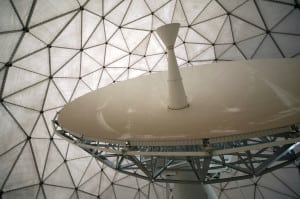Latest News
[Via Satellite 04-08-2016] The U.S. Air Force Space Command’s Space and Missile Systems Center (USAF SMC) and the 460th Space Wing have confirmed that Command and Control (C2) of the Space-Based Infrared Systems (SBIRS) and Defense Support Program (DSP) satellites and payloads have been transferred from their legacy ground system to the new Block 10 ground system. The Department of Defense (DOD) approved cutover of C2 for both constellations March 18 from the legacy sites at Buckley Air Force Base (AFB) in Colorado, Schriever AFB, Colo., and Boulder, Colo. to one consolidated site at the mission control station at Buckley AFB, Colo., and its backup mission control station at Schriever AFB. SMC completed the switch on March 21.
The next major milestone decision is the Air Force program executive office certification for entry into trial period and Operational User Evaluation (OUE), currently scheduled for the end of May. The Air Force Operational Test and Evaluation Center will use data from the integrated test and evaluation test campaign and OUE, and AFSPC will use data from both tests along with the trial period to determine operational acceptance in November 2016.
“This is a major milestone along the path to demonstrating the ability for Block 10 to conduct the missile-warning and defense missions of the SBIRS and DSP constellations, and to gain operational acceptance,” said Col. Mike Guetlein, remote sensing systems director at the Air Force. “The benefits realized from the increase in performance capability across the four mission areas of missile-warning, missile-defense, battle-space awareness and technical intelligence cannot be overstated.”
Get the latest Via Satellite news!
Subscribe Now